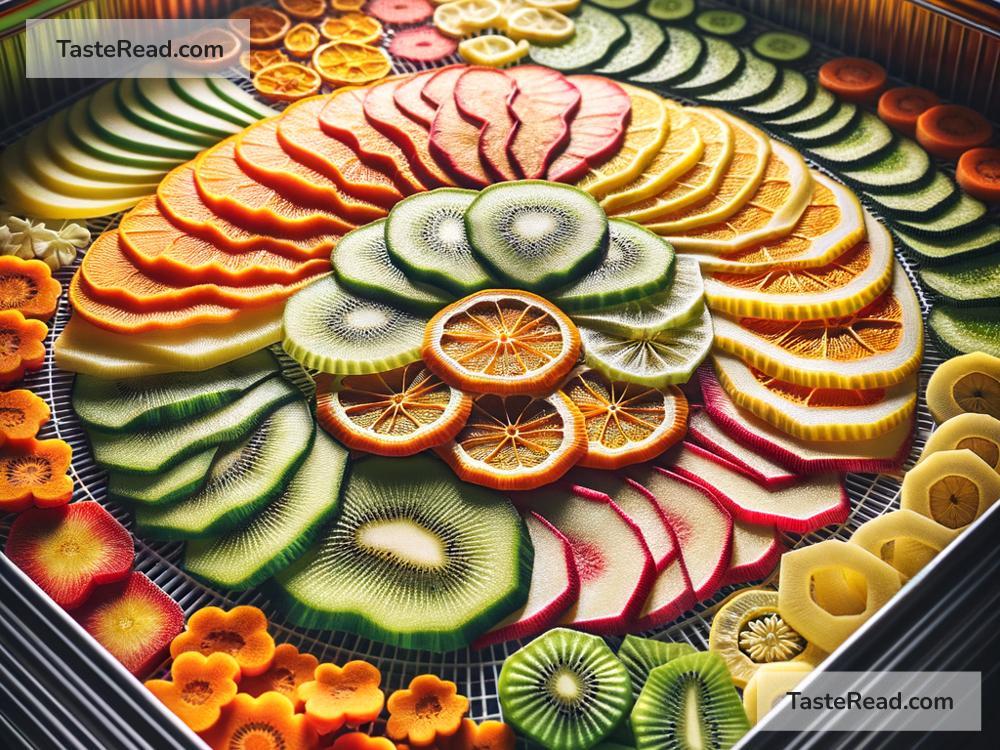The Science of Food Dehydration: Techniques and Benefits
Food dehydration is a process that has been around for thousands of years. From drying fruits under the sun to using modern machines, it’s one of the simplest and most effective ways to preserve food. But have you ever wondered how it works, why it’s so useful, and the science behind it? In this blog, we’ll explore the techniques used to dehydrate food and the many benefits this method offers.
What is Food Dehydration?
Food dehydration is the process of removing water or moisture from food. When foods like fruits, vegetables, and meats are dehydrated, the water content is reduced, making it harder for bacteria, mold, and yeast to grow. This helps preserve the food for a much longer time compared to fresh produce.
Water makes up a large portion of most foods. For example, fresh fruit like apples or bananas can contain over 80% water. By drying these foods, their shelf life increases, and they become lighter and easier to store. That’s why hikers and campers love dehydrated snacks like dried fruits or beef jerky—they’re portable, long-lasting, and packed with nutrients.
How Does It Work?
The science behind food dehydration involves controlling temperature, air circulation, and humidity to reduce moisture. Let’s break down how it happens in simple terms:
1. Evaporation:
When heat is applied to food, the water inside turns into vapor. This vapor escapes from the food into the surrounding air.
2. Air Circulation:
To remove the water vapor effectively, good airflow is essential. Moving air carries away the moisture from food surfaces, speeding up the drying process.
3. Optimal Temperature:
Drying food requires the right amount of heat—not too high, not too low. If the temperature is too low, the dehydration process will take forever, and the food may spoil before it’s completely dried. If the temperature is too high, the food can cook or dry unevenly.
Types of Food Dehydration Techniques
There are several methods used to dehydrate food. Each technique has its pros and cons, but they all follow the basic idea of removing moisture.
1. Sun Drying:
This is the oldest and simplest method. Foods like fruits and herbs are laid out in the sun, often covered with netting to protect them from bugs. While it’s very natural and energy-efficient, sun drying requires good weather conditions and can take several days.
2. Oven Drying:
An oven can be used as a food dehydrator by setting it to a low temperature (usually between 120°F–150°F or 50°C–65°C) and leaving the door slightly open to allow moisture to escape. It’s useful for small-scale dehydration but may consume a lot of energy and isn’t as efficient as specialized devices.
3. Electric Food Dehydrators:
Modern dehydrators are machines designed specifically for drying food. They have adjustable temperature settings and built-in fans for consistent airflow. These devices are the fastest and most reliable way to dehydrate food at home, and they allow you to preserve large batches at once.
4. Freeze Drying:
Freeze drying uses a special technique where food is frozen and then placed in a vacuum to remove moisture. It’s usually done on a commercial scale and preserves the food’s texture, flavor, and nutritional value better than other methods. Freeze-dried foods are popular in emergency food supplies and astronaut meals.
The Benefits of Food Dehydration
Dehydrating food offers a wide range of benefits, from convenience to sustainability. Here are some of the most important advantages:
1. Longer Shelf Life:
Removing moisture from food prevents bacteria and fungi from growing, allowing dehydrated foods to last much longer than fresh ones. For example, dried fruits and vegetables can last for months, while fresh produce might spoil in a week or two.
2. Lightweight and Portable:
Dehydrated food is lighter and more compact because it doesn’t contain water. This makes it great for travel, camping, and emergency kits. Imagine carrying a few ounces of dried apples instead of a heavy bag of fresh ones!
3. Nutrient Retention:
Unlike some other preservation techniques, dehydrating food keeps most of the nutrients intact. Dried fruits, vegetables, and meats can still be packed with vitamins, minerals, and protein, making them excellent healthy snacks.
4. Less Food Waste:
Food dehydration is a fantastic way to reduce waste. If you have fruits or vegetables that are nearing the end of their freshness, you can dehydrate them instead of throwing them away. This saves money and reduces food waste at home.
5. Versatility:
Dehydrated foods are incredibly versatile. You can snack on dried fruit, rehydrate vegetables and meats for cooking, or make powdered ingredients like tomato or garlic powder. Herbs can also be dried and stored for use in recipes.
6. Environmental Benefits:
Dehydrating food is an eco-friendly preservation method. It uses less energy than freezers and doesn’t require chemical preservatives or excess packaging. Sun drying, in particular, has zero energy costs.
Tips for Successful Food Dehydration
If you’re new to dehydrating food, here are some beginner tips to keep in mind:
-
Prep the Food: Cut fruits and vegetables into thin, even slices. This ensures that they dry evenly.
-
Don’t Overlap: Lay food pieces in a single layer without overlapping them to allow proper airflow.
-
Check Frequently: Keep an eye on the food to avoid overdrying, which can make it too brittle.
-
Store Properly: Once dried, store the food in airtight containers to keep out moisture and extend shelf life.
Conclusion
Food dehydration is a fascinating blend of science and practicality. It allows us to preserve food, reduce waste, and enjoy healthy, portable snacks for months. Whether you’re drying fruits, veggies, or meat, there’s a method that works for everyone—from sun drying to using high-tech machines.
By understanding the techniques and benefits of food dehydration, you can take control of your food storage and even create delicious homemade snacks. So the next time you see fruits or veggies nearing their expiration, why not try dehydrating them instead? It’s a simple, rewarding way to preserve food and enjoy it for longer!


